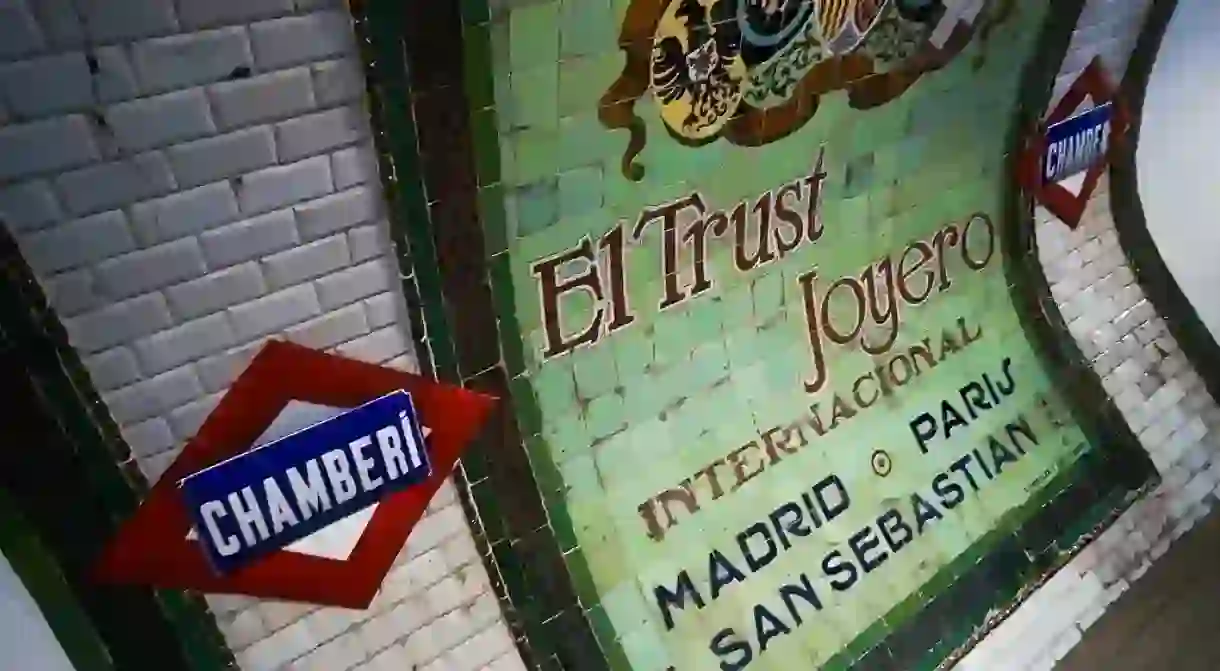The Story Behind Madrid’s Hidden Ghost Station

Madrid might be known for its world-class art galleries and tapas food culture, but there is one sight that has remained under the radar, as well as deep under the ground. Discover a bygone era by taking a trip to Madrid’s hidden ghost station.

If you are riding the Madrid Metro on Line 1, you may notice something weird as the train speeds between the stations Bilbao and Iglesia. The darkness between the two stations is quickly punctuated by the golden lights illuminating an old train platform. It is a blink-and-you-miss-it moment, and you might just assume your mind is playing tricks on you, but this is in fact Madrid’s hidden ghost station, Chamberí.
This is what the station looked like when it was still in use:
http://instagram.com/p/BQQHCLVD_eq/?taken-at=656438397870862
… and this is what it looks like today.
https://www.instagram.com/p/BY0X8SwAQgp/?taken-at=656438397870862
Chamberí station, just north of the centre of Madrid, was one of the eight stations that made up the city’s very first metro line and was opened to the public on October 17, 1919. The metro station, like the others along Line 1, was designed by architect Antonio Palacios. Palacios is famous for designing Madrid’s Palacio de Comunicaciones, the grand building on Plaza de Cibeles that was formerly the headquarters of Spain’s postal service (surely the fanciest post office in the world) and is today the base of Madrid’s City Hall.
http://instagram.com/p/BXTGhbaD-Q2/?taken-at=656438397870862
In the 1960s, Madrid Metro decided to extend the station platforms to allow for longer trains that would hold more passengers. The platforms were lengthened from 60 metres (197 feet) to 90 metres (295 feet), but there was a problem when it came to Chamberí. Because of its close proximity to the nearby stations Bilbao and Iglesia, it was impossible to extend the platform, so in 1966 the decision was taken to close down the station.
The station lay unused for over 40 years, but the fact that its entrance was bricked up meant that its original features were well preserved. For decades, the only remnant of Chamberí Station was the mystifying flash of its platform as the train sped along Line 1; locals knew that the station had existed, but had no idea where its entrance had gone.
http://instagram.com/p/BTteNbAF9Vt/?taken-at=656438397870862
In 2006 it was decided to restore the old station as a museum, and in 2008 it opened as Andén 0 or Platform 0. One of the highlights of the museum are the intricately reconstructed advertisements that lined the platform, made from mosaics and advertising everything from La Estrella coffee to Longines watches and the Gal perfumery. There are also original ticket booths, turnstiles, platform, maps and videos charting the construction of the metro.
Entrance is free to the old metro station, which is open to the public from Thursday to Sunday. It is a great place to discover another side to the history of the city, whose metro is today is the seventh-longest in the world and has the most escalators in the world: a whopping 1,698.
Plaza de Chamberí, s/n, 28010 Madrid, Spain
http://instagram.com/p/BUaRKjLg2kr/?taken-at=656438397870862













